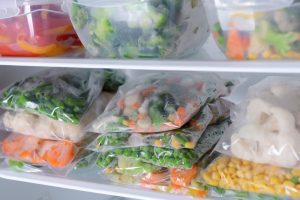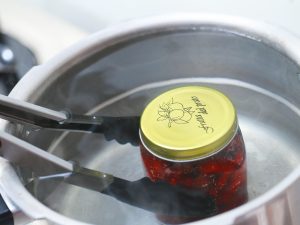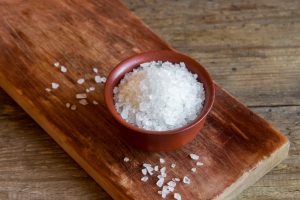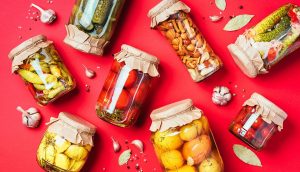Top 10 Food Preservation Methods

Since ancient times, humans try to preserve food for as long as possible. For this reason, we have designed strategies that prevent the rapid deterioration of food, something that was especially important in times of scarcity.Today we have many different techniques that extend the shelf life of food, otherwise most of the products we buy would be unhealthy within a few days.
Some of these procedures date back many centuries, while others are more current, as they are based on advanced technologies. We all have a fridge and freezer at home. Many products that we purchase indicate that they have been vacuum packed. We know that the milk we drink every morning is pasteurized. All these techniques and devices are part of our daily life, but do we know what each one consists of? In this article we will explain what causes food to spoil and also review what are the main methods designed to slow down this process.
What makes food spoil?
The answer is clear: microorganisms. Again, these microscopic beings are the protagonists. If there were no microorganisms in a medium, the product would not rot. The problem is that there is no place totally free of bacteria, viruses or fungi. Microorganisms are everywhere: they are the most abundant and diverse group of living things on Earth. There are millions of different species of bacteria, and of these, only about 500 make us sick.
Therefore, there is an infinity of species with which we never get to interact, but that is undoubtedly there.Like many other living beings, there are microorganisms that need to feed on organic matter, so they are in the middle waiting to find something they can consume.
Microorganisms On Food
There are so many bacteria that, let us leave food where we leave it, some will come to it ready to eat it.It is at this moment that the deterioration process begins. In the beginning, on the food there is a small population of microorganisms (generally always bacteria) that begin to degrade the components of the product to obtain energy. These initial bacteria can come from the middle (for example, when putting the product in our kitchen) or they may already be in the food when we buy it.
Growing Bacteria Population
At first, their presence is imperceptible and, in fact, whenever we eat a product, there are microorganisms in it, what happens is that they are not in a large enough number to cause noticeable changes in appearance, taste or smell. However, as time passes, the population of bacteria grows exponentially reaching immense values. In a small piece of meat, there can be several times the world’s human population. It is at this point that the changes begin to be noticed, since the compounds that bacteria generate after eating the product alter its appearance, taste and smell.
When this happens, we say that the food is “bad.” There are times when eating that spoiled product would not have negative consequences for our health, beyond that it would be unpleasant to eat it. The problem comes when these populations of bacteria that have grown can also cause us diseases.In fact, those transmitted through food are one of the most common groups of diseases in the world. These bacteria are responsible for when they have grown excessively in food, causing us gastroenteritis, listeriosis, salmonellosis and even botulism, caused by one of the most lethal bacteria.
Microorganisms Wreak Havoc On Humans
These microorganisms that infect us through food have wreaked havoc throughout the history of mankind, so from their origins, people have had to develop techniques that prevent the proliferation of bacteria. And they did it before they knew that microorganisms existed. Over time, we have been perfecting these techniques and developing new ones.
How Is Food Poisoning Avoided?
The first thing to keep in mind is that completely stopping the growth of microorganisms is almost impossible, so what you have to try is to slow down this development as much as possible.
If the bacteria could be completely eliminated, the food would not have an expiration date. But this cannot be achieved. Therefore, preservation methods are designed so spoilage comes as late as possible.
To achieve this, you have to put obstacles to the bacteria, that is, not make things easy for them. And this is what conservation methods are based on. As we will see, some try to remove the water from the bacteria (without it, they can hardly grow), some give them temperatures so low that it is difficult for them to grow, some subject them to a lot of heat to destroy as many as possible, others put salt on them, etc.
The 10 Most Used Conservation Techniques
With these processes we achieve that the bacteria grow very slowly, causing them to take much longer to reach sufficient population values to cause a deterioration of the product. Remember, however, that there is no way around the process. We can only slow it down. Even frozen food will end up rotting. It takes years, but it will
Below we present the 10 main food preservation methods, explaining what their operation consists of and how it manages to stop the growth of microorganisms.
- Refrigeration

Refrigeration is the conservation technique that refrigerators follow. It consists of lowering the temperature to 4 ºC, enough so that the biochemical reactions of the bacteria present in the food become much slower and take longer to proliferate.
- Freezing

Similar to refrigeration, but in this case the temperature must be below 0 ºC, and we try to keep it at -18 ºC. With freezing, the water in the food turns into ice, so the bacteria, since they do not have liquid water, can practically not proliferate. We don’t kill them, but they grow extremely slowly.
- Deep freezing

Deep freezing consists of subjecting the food to temperatures below -40 ºC but for a short period of time, less than 2 hours. Along with freezing, it is the most effective preservation technique and the one that least alters the properties of the product.
- Boiling

Also known as blanching, boiling is a preservation method that is usually a pre-freezing step for vegetables. These are immersed in boiling water to eliminate all possible pathogens and later they are frozen. It is important since coming from the ground, they are carriers of many different bacteria.
- Sterilization

Sterilization is a very effective preservation method in which almost all bacteria are killed, including spores. Which are the structures that some microorganisms form to protect themselves and that normally cannot be eliminated. The problem is that applying such high temperatures (about 115 ºC for a few seconds) alters the properties of the food and nutrients and vitamins are lost. Of course, from a microbiological point of view, it is the safest.
6. Pasteurization

Pasteurization is like sterilization. For this situation, lower temperatures are applied (around 80 ºC), so we do keep up the properties of the food. The issue is that we execute the bacteria however not the spores. So pasteurized items (like milk) should be kept in the refrigerator once opened to slow down the growth of these bacteria.
7. Salting

Salting is one of the oldest preservation methods and consists of adding salt to the food. Salt is “toxic” for microorganisms, as it captures water from food and makes it unavailable for bacteria.
8. Acidification

Microorganisms are usually very sensitive to acidity. Therefore, acidification consists of reducing the pH of the food so that microorganisms cannot grow. Adding vinegar or lemon juice to products is quite effective.
9. Pickled

Pickling consists of applying a salt and vinegar bath to the food.
which allows good conservation (the salt dehydrates and the vinegar acidifies) and, in addition, gives the product a characteristic flavor.
10. Irradiation

Irradiation consists of exposing food to radiation doses (generally X-rays or gamma rays),
that destroy the genetic material of microorganisms, thus preventing them from developing.
Hope you like it

